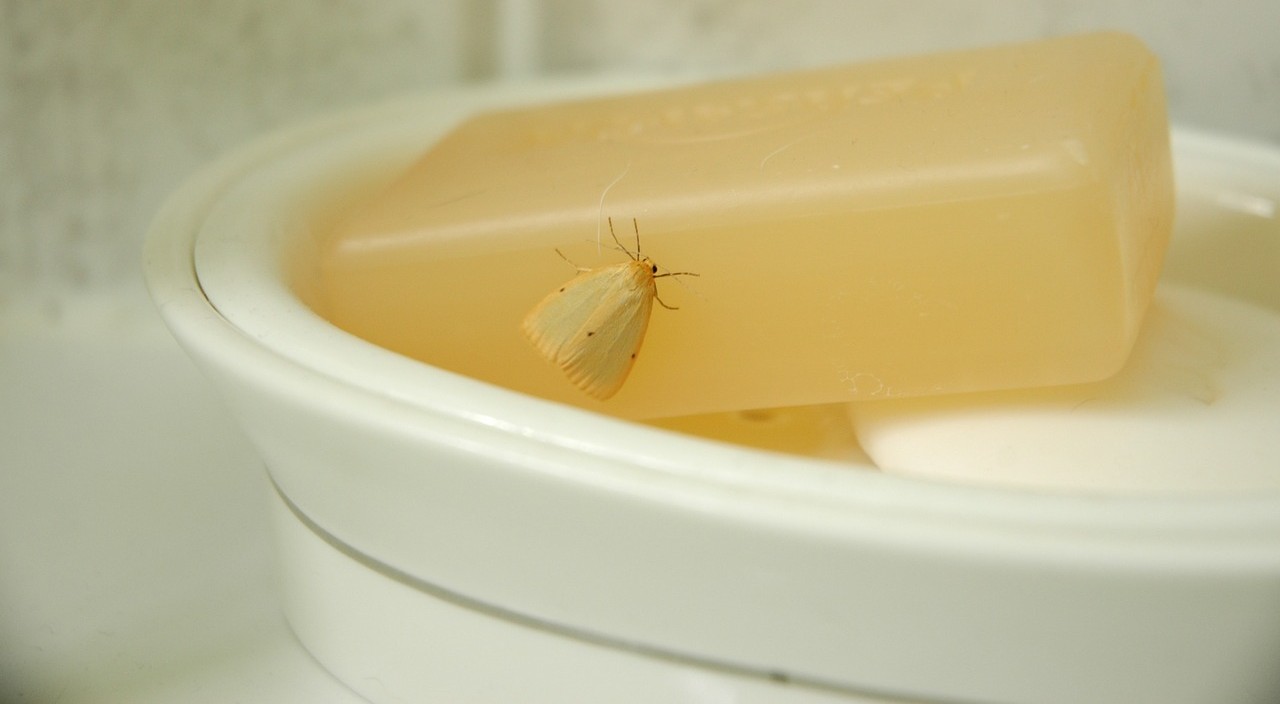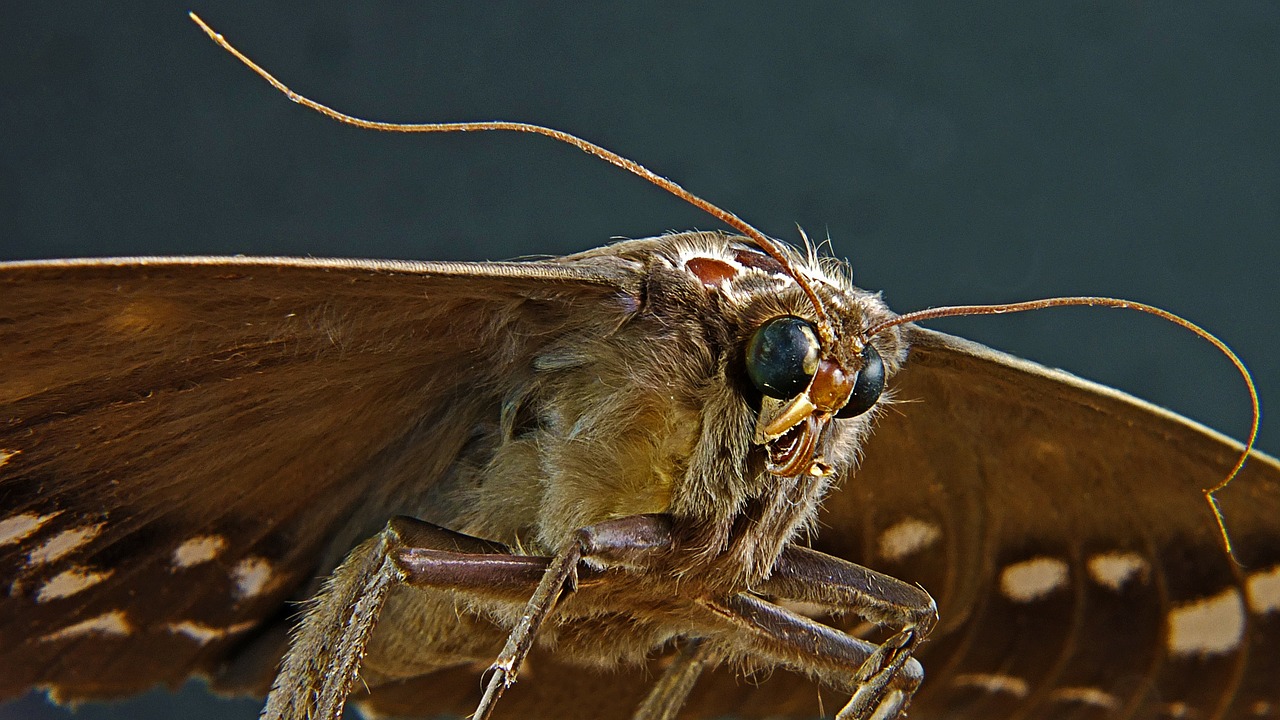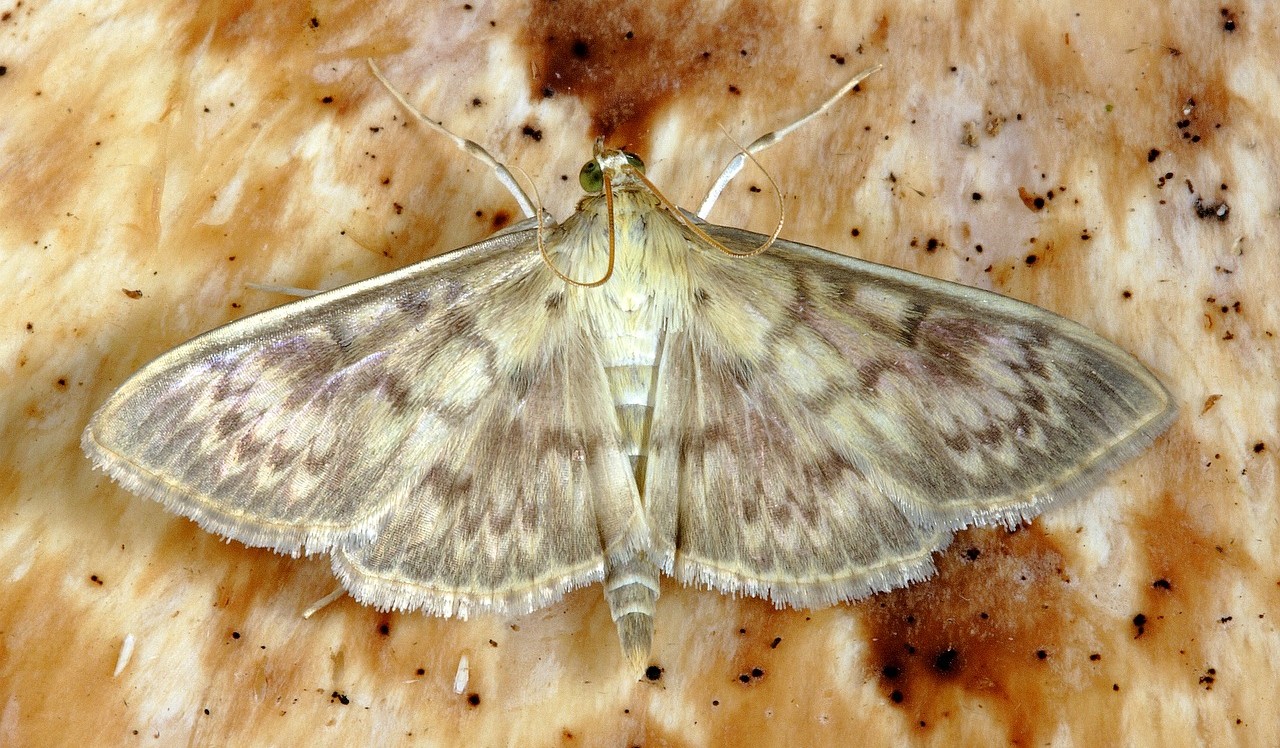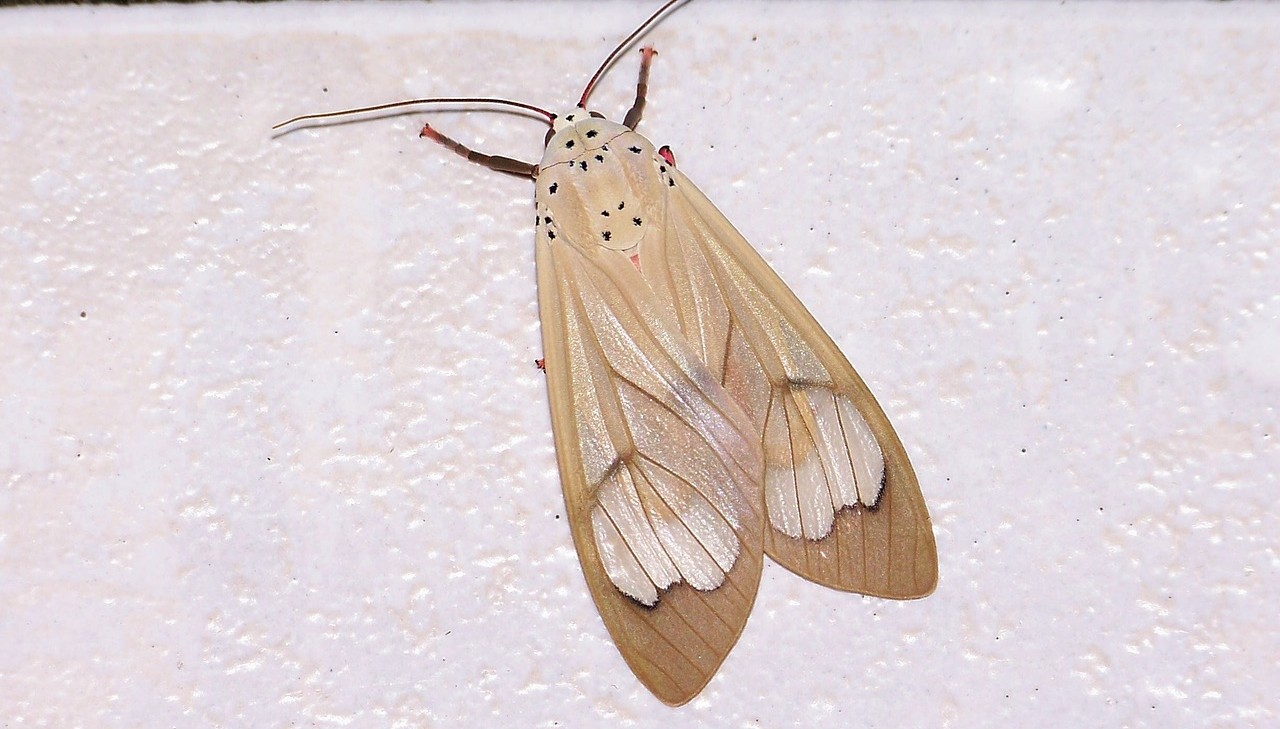How To Get Rid of Moths and Prevent An Infestation
There are a large number of harmless field moths and it is not unusual to see the odd moth in your home during summer months because they will enter via open doors and windows at night. However, if moths become a regular sight in your property, you might have an infestation developing in your home and you will need to take immediate steps to identify and remove the source of the problem to protect your home from the damage they can inflict.
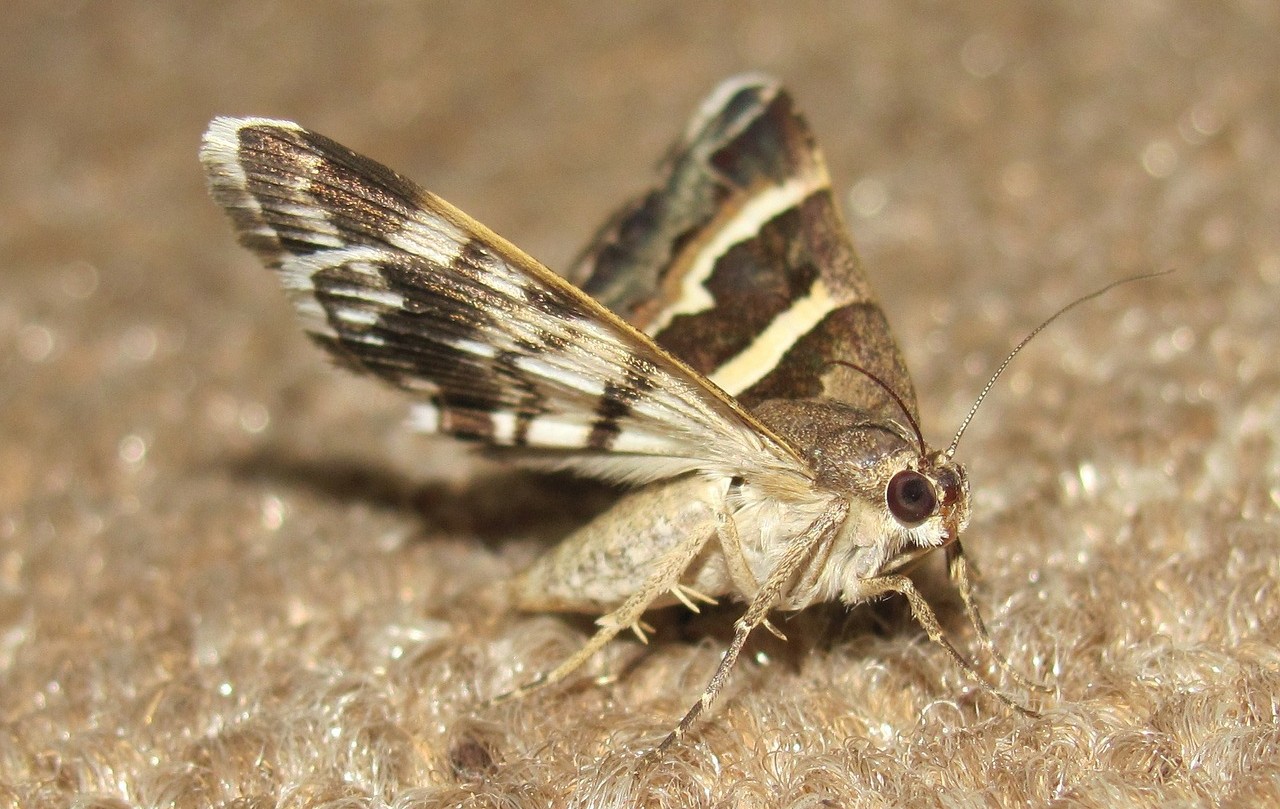
To assist you in dealing with your moth infestation, the team here at Pest Defence have put together this fact sheet of everything you need to know about the pest.
Why are moths a pest?
Although clothes moths don’t negatively affect your health in the way that many public health pests do, they can be a serious pest causing damage to carpets, furniture and clothing which is made of natural fabrics such as wool and silk. The damage is actually caused by the larvae (caterpillars) of the moth, resulting in holes appearing where the carpets or clothing have been eaten. The damage is irreversible, sometimes causing ruination of treasured possessions and expensive replacement costs. Clothes moths have caused the destruction of irreplaceable and priceless items such as an old teddy bear, a wedding dress, or a historic museum piece.
Most common moth pests
There are a few different species that can be a pest in your home, all with slightly different appearances, habits and lifespan. To help you identify which pest you’re dealing with, we have the rundown of the most common here:
Common Clothes Moth
This is one of the most destructive and commonly encountered clothes moths in homes and businesses. The adult moth is about 6-7mm long with uniformly straw coloured fringed wings. They tend to avoid the light and run as opposed to flying, and are often seen crawling or flitting around at floor level, or resting on walls. The larvae are up to 10mm long and are cream coloured with brown heads. Their larvae feed on most materials and usually take about 6 weeks to mature to adulthood in favourable conditions.
Case-Bearing Clothes Moth
This is another of the most destructive clothes moths in homes and businesses and is also commonly encountered. The adult moth is similar in size and habit to the Common Clothes Moth being about 6-7mm long, but is slightly darker in colouration with three faint spots on each wing. The Case-Bearing Clothes Moth is so named because the larval caterpillar spins a silken cell around itself which it carries as it moves and feeds. These are often described as looking like grains of rice on the floors, although if you look closely you can often see the head protruding from the case.
Brown House Moth
These are less destructive and are of minor importance compared to the clothes moth mentioned above. They are larger moth with the adults growing to 8 to 14mm in length. The wings are brown with three or four dark spots clearly visible on the wings. They are generally considered to be scavengers and their larvae, which grow to 20mm in length, will feed on a wide range of fabrics and food, particularly furs, feather and cereal based feed. The development from egg to adult is slow, usually with just one generation each year so the rate of population growth is slow.
White-Shouldered House Moth
This is another moth of lesser significance. The adult moth grow to 8-10mm in length and a easily identified by a distinctive white head and mottled wings. This species of moth is often found in colder outdoor buildings and are less likely to become a problem indoors. Its larvae are cream coloured with a red head, or can be seen in a silk cocoon. These moths don’t cause as much damage to textiles but the larvae do scavenge on a wide range of foods.
Identifying a moth infestation
Obviously, the clearest indication that you have a clothes moth infestation is visible damage to your clothes, curtains, carpets or any other textile in your home. The damage usually occurs to clothes and carpets that are in dark locations and are not cleaned or laundered regularly. This is because the adult moth are attracted to dark areas and the eggs, larvae and pupae can survive and develop in fabrics and carpets that are obscured from view. Consequently, infestations can develop for some time before being identified by which time there is often significant damage caused.
However, damage is not the only sign of an infestation. Other signs to look out for include:
- The presence of adult moth. If you see small moth on walls or in corners and around the skirting of your home then it is worth having a closer look for damage to the carpets under fixed furniture, and clothes stored in cupboards and wardrobes. The moth will only damage natural fabrics such as wool.
- The presence of moth larvae. The larvae of the Case-Bearing Clothes Moth look like grains of rice and are often the first indication of the presence of this species of moth. The larvae of other species look like cream coloured maggots, some with a brown head.
- The presence of pupae. The pupal cocoon is often found amongst the silken thread of the larvae on which is stuck a range of material including fibres, dust and the faecal pellets of the larvae – this material is called Frass.
Prevention of clothes moth infestations
When it comes to controlling clothes moth infestations, prevention is definitely better than cure. When we are asked to eradicate clothes moth infestations from homes and businesses it is invariably after the damage has been done.
However, prevention of clothes moth infestations is not difficult. A regular and thorough cleaning and laundering of all vulnerable carpets and clothes will help to prevent the initiation and development of the insects’ life cycle. In our modern age this is often easier said than done, but regular ‘spring cleans’ will help to prevent clothes moths from establishing themselves in your home and will prevent the costly and stressful damage that they cause.
How to get rid of moths
When it comes to removing moth infestations from your property there are a few things you can do to reduce the amount of moth larvae from your home, such as:
- Clean all areas: Vacuum woollen carpets thoroughly and vigorously, paying particular attention to the areas of the carpets that are regularly missed during routine cleaning – the areas of carpet under and behind furniture, and along the skirting.
- Wash all vulnerable fabrics: Natural materials and soft furnishings in the vicinity of the infestation.
- Thoroughly clean all furniture: Use a soap and vinegar solution to clean surfaces, including wardrobes and drawers that have been affected, paying close attention to any cracks or crevices. Moths are likely to nest and settle in areas that you leave untouched because they know that they can nest and feed here.
- Wash everything: Don’t forget to wash your old luggage cases, bags you haven’t used in ages or containers and trinket boxes that larvae may be hiding in.
- Empty out your vacuum regularly: If you’ve managed to collect the larvae in your vacuum, empty it into a bin bag outside and pop it straight into the bin. Emptying your vacuum is a good start to reducing your pest infestation and, not to mention, will ensure your vacuum has more than enough room to collect the dust and debris tomorrow – after another thorough clean.
- Set up moth traps: A combination of flypaper and fish oil will attract and kill them. You can hang these up anywhere in the home.
- Swap your clothes hangers for cedar ones: Moths do not like the smell and will be repelled from eating your clothes.
- Fill small bags with scented ingredients: These can include thyme, rosemary, bay leaves and lavender. You can use essential oils too, a great room freshener alternative as well as a preventative measure.
- Keep your home well ventilated: Moths will not make a nest in your home if you allow too much sun and air into your home.
- Vacuum your home regularly: Get rid of any larvae that may be present in your home before the infestation grows.
These steps alone, however, will not be enough to tackle the infestation and you should enlist the services of a specialist pest control company to completely eradicate all of the moths and larvae on your premises. It is unlikely that thorough cleaning alone will remove all of the eggs, larvae, pupae and adults, and any missed will continue to develop and multiply again resulting in more damage to your fabrics and soft furnishings.
A professional service, such as the one we offer here at Pest Defence, will ensure that 100% of the problem is tackled; furthermore, we can offer you expert advice on the best way to prevent the infestation from reoccurring.
Moth FAQs
What kills moths?
Moth traps such as flypaper and fish oil will trap and kill them.
What kills moth larvae?
A hot wash cycle will kill moth larvae and, alternatively, insect powder will do the job too. Just remember to vacuum the areas you have sprinkled the powder as it can be harmful to yourself, children and pets.
What repels moths?
Strong essential oils and ingredients such as lavender and cedar.
How do I get rid of moths in my wardrobe?
Remove everything, wash the rail and any shelves you may have inside your wardrobe. Clean all clothes before replacing back inside.
How to get rid of moths naturally
Turn to naturally scented herbs.
What are moths attracted to?
Moths are attracted to salt (sodium) found in sweat, silk, fur, felt, hair – anything they can eat.
Are moths harmful?
Moths won’t bite or cause direct harm to humans but they can indirectly cause rashes and allergies.
Are moths dangerous?
In short, no. Moths are most dangerous to your furnishings but they can indirectly cause discomfort to humans.
How do moths get into the house?
If you find a single moth in your home, it’s likely that it has come through the window. But if you’re inundated with them it’s likely that the larvae has been brought into the home through somebody’s shopping or clothes.
How do moths reproduce?
Depending on the type of moth, they can mate both sexually and asexually.
How do moths breed?
Female moths can lay around 50 eggs within 21 days but after that, they die not long after.
Why are moths in my house?
Every house will offer moths and their larvae a nice feast of hair and fabrics, which will help them to thrive, along with a few safe and dark places to nest.
How long do moths live?
Moths can live up to 90 days but female moths generally live for around half of that.
Pest Defence operate locally throughout Essex, London and surrounding areas and provide first class pest control services with quick call-out times. We have over 25 years’ experience and a fantastic team of friendly, qualified and experienced exterminators. We are Local Authority approved and a member of The British Pest Control Association, so you can be confident in the quality of our work. We’re experienced in safely handling exterminations of all kinds, including:
- Rabbits
- & many more
Get in touch today for more information; we’ll be happy to help with any enquiry you may have.

